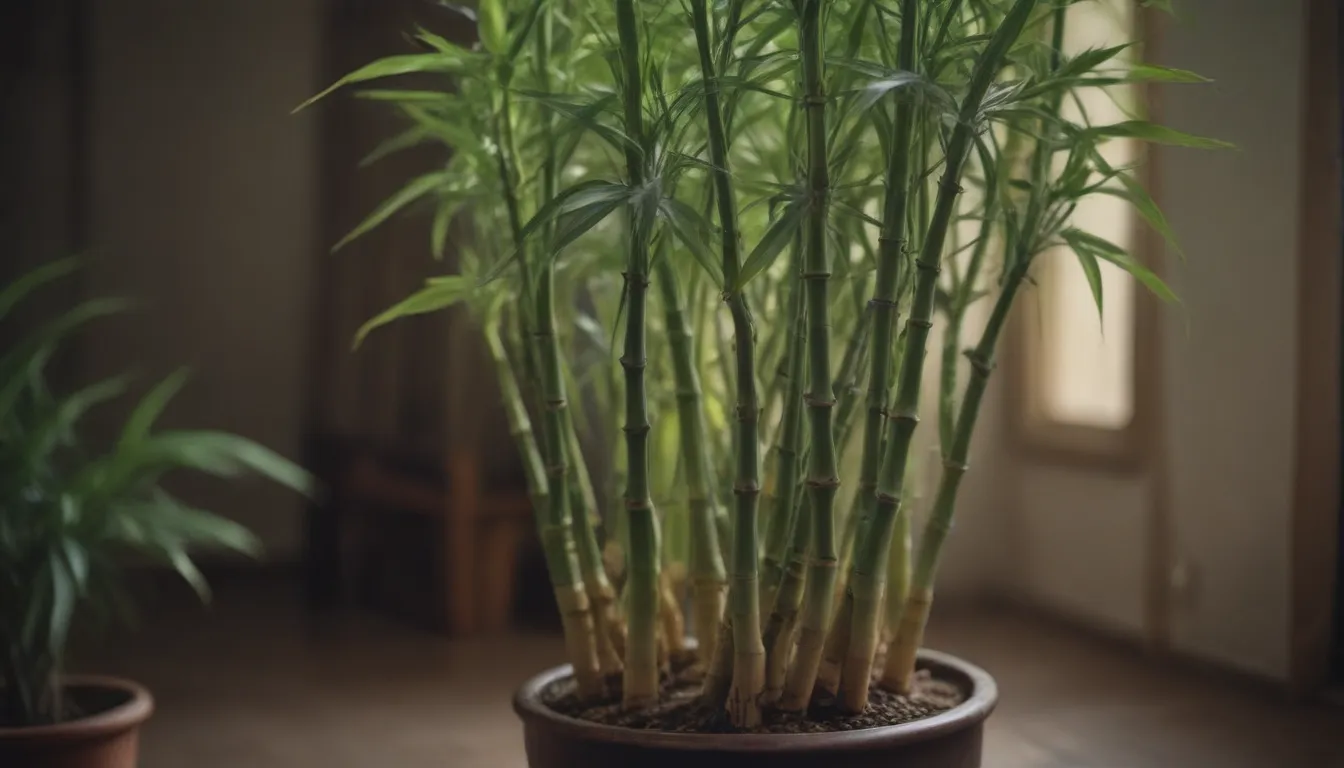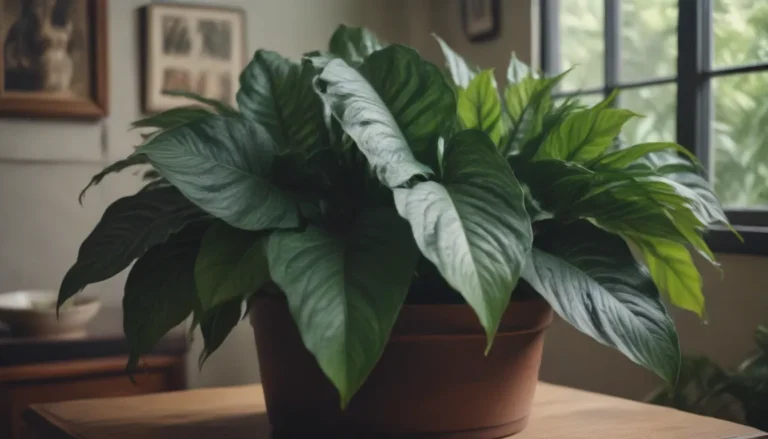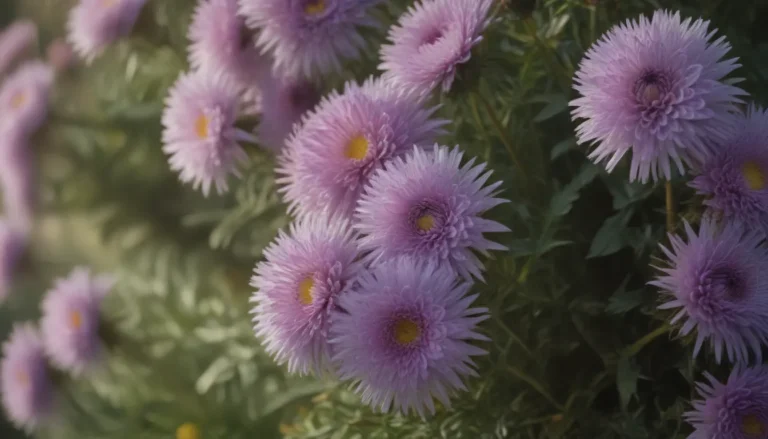How to Successfully Grow and Care for Lucky Bamboo

Are you looking to add a touch of luck to your home or office with a low-maintenance plant? Lucky bamboo might be the perfect choice for you! This unique plant is not only easy to grow but also known for bringing good fortune to those who nurture it. In this comprehensive guide, we will delve into everything you need to know to successfully grow and care for lucky bamboo indoors. Let’s get started!
Understanding Lucky Bamboo and Its Significance
Before we dive into the details of caring for lucky bamboo, let’s explore its background and significance. Lucky bamboo, despite its name, is not actually related to bamboo at all. It belongs to the Dracaena family and is known for its braided or spiral stalks. In Chinese traditions, the number of stalks of lucky bamboo holds different meanings:
- Two stalks: Represents love and doubles your luck.
- Three stalks: Symbolize happiness, prosperity, and longevity.
- Five stalks: Signify the five essential parts of life – happiness, wealth, longevity, love, and health.
- Six stalks: Bring luck, peace, and prosperity.
- Seven stalks: Represent good health.
- Eight stalks: Symbolize growth and abundance.
- Nine stalks: Signify good fortune and completeness.
- Ten stalks: Bring perfection.
- Twenty-one stalks: Symbolize a powerful blessing.
It’s important to note that the number four is avoided as it sounds similar to the word for “death” in Chinese culture. Now that we understand the significance of the number of stalks, let’s move on to how to care for this auspicious plant.
Lucky Bamboo Care Tips
Lucky bamboo is known for its resilience and ability to thrive in various conditions. Whether you have a green thumb or are a novice gardener, lucky bamboo is a great addition to your indoor plant collection. Here are some essential care tips to help your lucky bamboo thrive:
Light
- Lucky bamboo prefers bright, filtered sunlight. Avoid direct sunlight to prevent scorching of the leaves.
- Rotate your plant regularly to ensure even light distribution.
- If the plant starts to stretch or the leaves fade, provide more light.
Soil
- Lucky bamboo can be grown in well-drained, rich potting soil.
- Keep the soil moist but not waterlogged.
- Alternatively, you can grow lucky bamboo in pebbles or a vase filled with water, ensuring at least an inch of standing water at all times.
Water
- Lucky bamboo is sensitive to chlorine and other chemicals found in tap water.
- Consider using bottled or distilled water or let tap water sit for 24 hours to allow chlorine to dissipate.
- Change the water in the vase weekly to prevent diseases and odors.
- Ensure the roots are always submerged in water, adding more as needed every two to seven days.
Temperature and Humidity
- Maintain a temperature range of 65°F to 90°F for optimal growth.
- Avoid placing your plant near drafts or extreme temperatures.
- Lucky bamboo tolerates average indoor humidity levels well.
Fertilizer
- Feed your lucky bamboo with a single drop of liquid fertilizer monthly.
- Specialty lucky bamboo fertilizers are also available.
- Plants grown in water only need to be fertilized every other month with a weak liquid fertilizer.
With these care tips in mind, your lucky bamboo plant will continue to bring luck and beauty to your space. But what about pruning and propagating your plant? Let’s explore these aspects next.
Pruning and Propagating Lucky Bamboo
Occasional pruning is essential to maintain the shape and health of your lucky bamboo plant. Trimming offshoots and rotating the stalks can encourage new growth and maintain its form. Additionally, you can propagate lucky bamboo using cuttings to create new plants. Here’s how you can do it:
-
Pruning: Trim offshoots with sterile snippers, keeping them within an inch or two of the main stem. Pruning helps maintain the shape and appearance of the plant.
-
Propagating: You can propagate lucky bamboo at any time using cuttings. While the new plants may not have the exact shape of the original, they will continue to grow and bring luck to your space.
Regular pruning and propagating will ensure a healthy and vibrant lucky bamboo plant in your home or office. Now, let’s discuss how to pot and repot your plant to support its growth.
Potting and Repotting Lucky Bamboo
Proper potting is crucial for the growth and health of your lucky bamboo plant. Whether it’s in a vase with water or soil, ensuring adequate space for root growth is essential. Here’s how to pot and repot your lucky bamboo:
- Maintain at least one inch of space between the stalks and the edge of the vessel.
- If using a glass vase, ensure it can support the height of the bamboo stalks.
- Submerge the roots fully in water but avoid letting it rise to meet the stalks.
-
If your plant outgrows its current container, repot it by following these steps:
-
Carefully remove the plant from its current container.
- Gently shake off excess soil or rinse the roots if grown in water.
- Place the plant in a new vessel with fresh soil or water.
- Ensure the roots are adequately covered and supported in the new container.
By following these guidelines, you can provide your lucky bamboo with a conducive environment for growth and prosperity. But what about common pests and problems that may affect your plant? Let’s address these issues next.
Dealing with Common Pests and Problems
Just like any other plant, lucky bamboo is susceptible to pests and issues that can affect its health. By staying vigilant and addressing these problems promptly, you can ensure the longevity of your plant. Here are some common pests and problems you may encounter:
Common Pests
- White mealybugs: Remove them by hand or wash the plant with a mild soap solution.
- Green aphids: Rinse the plant with water to remove aphids.
- Spider mites: Use a gentle soap and water solution to wash off spider mites.
Common Problems
- Browning leaf tips: Caused by chlorine or additives in water. Trim affected leaves and change the water regularly.
- Black roots: Cut away black roots immediately and transfer the plant to clean water.
- Algae growth: Clean the container thoroughly and consider using an opaque vessel to prevent algae growth.
- Yellow leaves: Adjust sunlight exposure and reduce fertilizer if leaves turn yellow.
- Brown leaves: Increase humidity levels and ensure the water quality is suitable for the plant.
- Mushy stalks: Remove rotting stalks promptly to prevent further damage to the plant.
By addressing these common pests and problems, you can maintain a healthy and vibrant lucky bamboo plant that continues to bring positivity to your space. Remember, proper care and attention are key to ensuring your plant thrives for years to come.
Conclusion
In conclusion, lucky bamboo is a wonderful plant that not only adds beauty to your surroundings but also symbolizes luck and prosperity. By following the care tips outlined in this guide, you can cultivate a thriving and flourishing lucky bamboo plant that uplifts your space. Whether you’re a seasoned gardener or new to plant care, lucky bamboo is a perfect addition to any indoor environment.
Remember to provide adequate light, water, and temperature for your lucky bamboo, and keep an eye out for pests and problems that may arise. With proper care and attention, your lucky bamboo plant will continue to bring joy and good fortune to your home or office.
So, why wait? Bring home a lucky bamboo plant today and watch as luck and prosperity flourish in your space!
- Lucky Bamboo
- Care for Lucky Bamboo
- Indoor Plants
- Plant Care
- Gardening
- Plant Propagation
- Plant Pruning
- Feng Shui
- Houseplants





